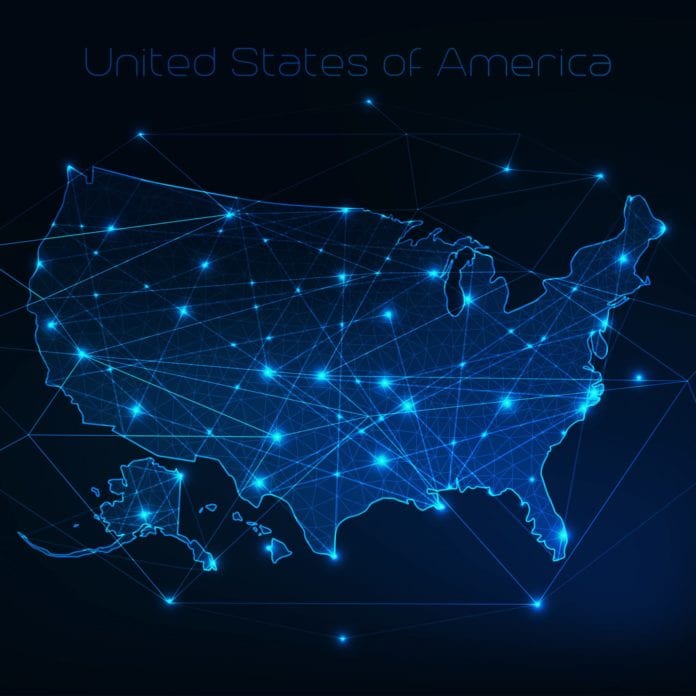“Access to affordable, reliable, high-speed broadband is essential to full participation in modern life in the United States,” reads the bipartisan infrastructure bill that was just passed by the U.S. Senate.
Broadband industry groups largely welcomed the Infrastructure Investment and Jobs Act, which dedicates a whopping $65 billion in funding that focuses on a combination of broadband capital expenditure funding, addressing affordability issues and even includes training in digital literacy.
While there has been some debate over whether broadband should be considered “infrastructure,” the majority of both Democrat and Republican Senators have at this point agreed that it is, in fact, “essential to full participation in modern life” in this country. Alongside billions of dollars in funding for modernizing mass transit systems, the electrical grid and water systems, fixing crumbling bridges and highways, addressing how freight travels across the country and more, the Biden administration’s plan puts $65 billion into various aspects of broadband. This comes on the heels of about $25 billion that has been allocated as part of the various coronavirus relief packages, to address emergency and near-term connectivity needs in the face of a pandemic where internet access has been vital to work, school and daily life for many.
“We’re poised once again — and I mean this in a literal sense — to make the same kind of historic investments that have so often made possible — made it possible for America to build the future and allow us to outcompete the rest of the world,” President Joe Biden said in remarks after the Senate passage of the bill. He added, “During remote learning … during the pandemic last year, we saw too many families forced to sit — literally sit — in their vehicles in a fast food parking lot so their children could get on the Internet they couldn’t afford and didn’t have access to at home. This bill will deliver affordable, high-speed Internet to every American — a necessity for the 21st century.”
Among the highlights of the bill’s funding for broadband:
-More than $42 billion in funding that will be directed to states in order to ensure that broadband is deployed to rural and inadequately served areas, including Tribal areas. Companies that receive funding would be required to offer low-cost plan options that make it easier for lower-income families to actually utilize broadband service once they have access to it.
In particular, the bill specifically calls out “middle mile” connectivity as important in ensuring that new networks are not only built out in areas which have not been served, but that they are able to interconnect with other, established networks in order to actually provide internet access.
-The bill also sets aside $14 billion to extend the Emergency Broadband Benefit program that subsidizes broadband service. The FCC has made note of the existing program’s popularity: The EBB, which provides subsidies of $50-$75 per month for internet service, enrolled more than one million U.S. households in the first week of the program being available. The EBB does change under the new rules set out in the proposed infrastructure bill: It becomes a permanent program called the Affordable Connectivity Benefit. More than one in four U.S. households will be eligible for it, according to the White House, but the ACN will provider a smaller subsidy of up to $30 per month. In addition, the bill requires providers to provider a “Broadband Nutrition Label” that will help families more easily comparison shop among offers in an apples-to-apples way.
-The bill lays out a speed threshold of 100 Mbps for downloads and 20 Mbps for upload — not the symmetric network speed requirements which would have been very difficult for wireless broadband networks to meet.
-The bill includes $2.75 billion for digital equity and digital literacy efforts, including teaching segments of the population which have typically been underserved by broadband offerings (racial and ethnic minorities, people with disabilities and others), the skills and training that are necessary to safely and effectively use the internet for daily tasks.
The bill was met with praise by industry groups including the Fiber Broadband Association, TIA, NCTA-the Internet and Television Association, and CTIA, the latter of which pointed out that the bill “also importantly identifies the need to auction additional spectrum.”
U.S. Secretary of Commerce Gina Raimondo noted in a statement that the bill directs more than $48 billion of its funding to flow through the National Telecommunications and Information Administration (NTIA). She called it “among the most significant government investment in broadband access and infrastructure in American history.”
“The investments in this bill will better position the United States to compete globally, strengthen our supply chains, and create millions of good-paying jobs – all while making our economy more resilient and just,” said Raimondo.

